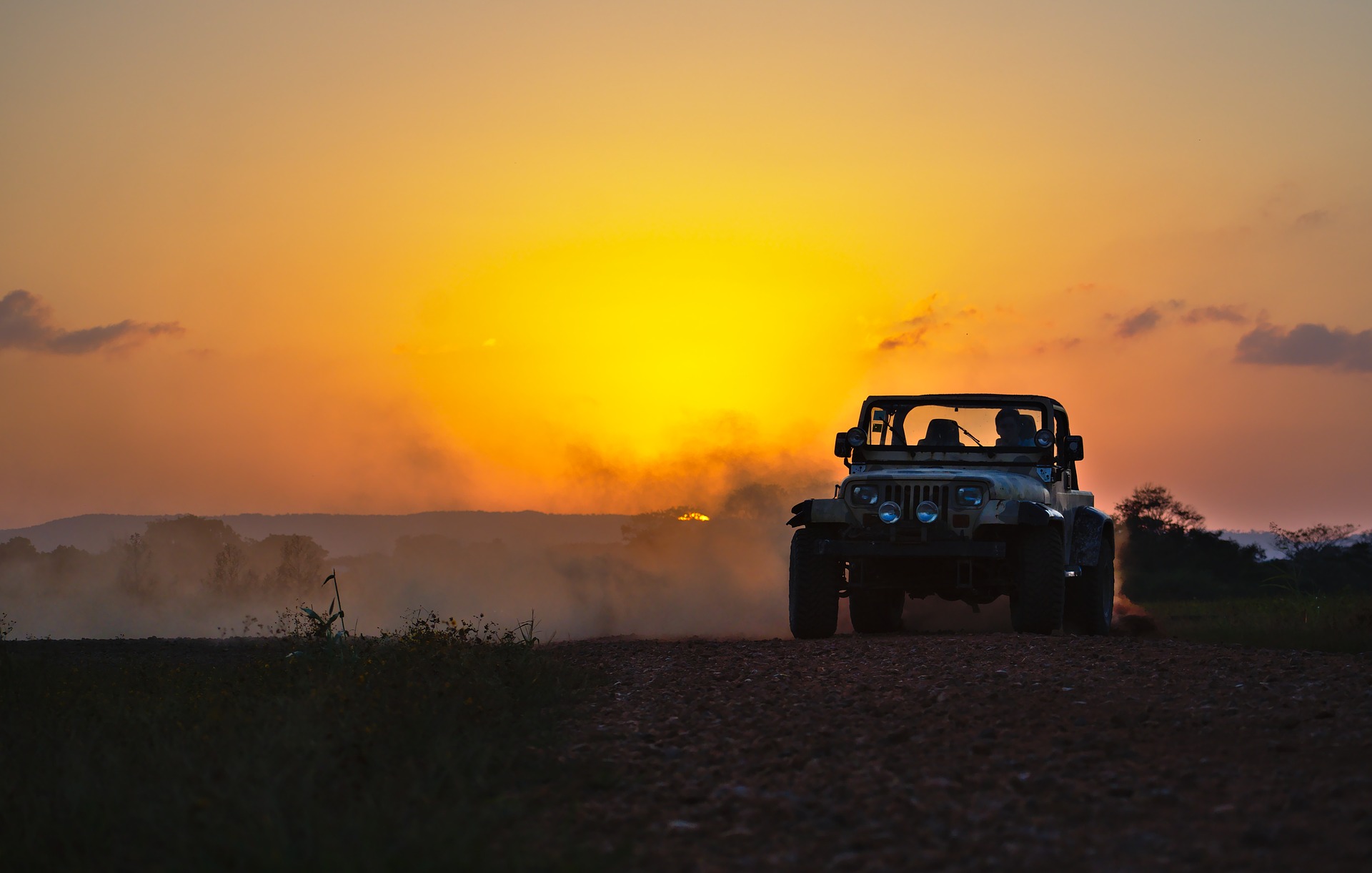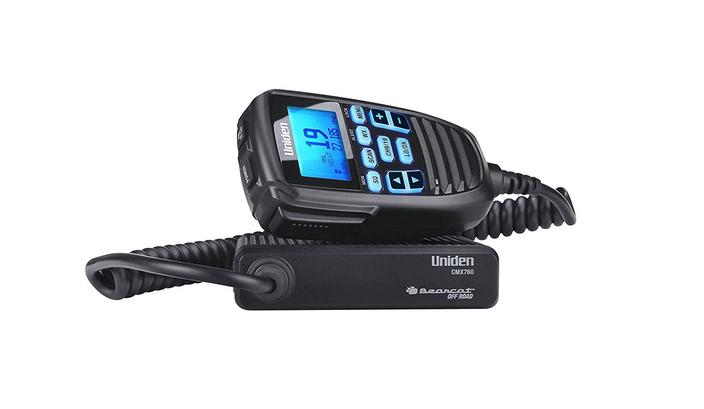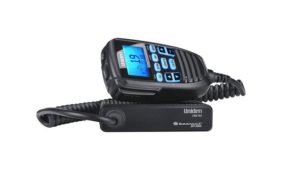A note about the Jeep CB and Radio Guide …
 “For those who know me, you know I’m a comms guy. In another lifetime, I specialized in two-way communications for my career. I still do volunteer work for the government as a comms specialist wherever and whenever needed. I have some pretty amazing two-way radio setups in my Jeep, covering a good portion of the Personal Radio Service and I am a licensed Amateur Radio operator. I wanted to share that information with the community so I wrote this Jeep CB & Radio Guide.
“For those who know me, you know I’m a comms guy. In another lifetime, I specialized in two-way communications for my career. I still do volunteer work for the government as a comms specialist wherever and whenever needed. I have some pretty amazing two-way radio setups in my Jeep, covering a good portion of the Personal Radio Service and I am a licensed Amateur Radio operator. I wanted to share that information with the community so I wrote this Jeep CB & Radio Guide.
I guess that got me some attention from people. Especially when we go wheelin’ with the Jeep. Most of the time the only two people who can always talk to each other are me and my son. I have had several acquaintances over the past few months ask me about radio communications for offroad trips, and a few strangers, too.
I have also seen a lot of internet posts over the last year or two, asking the same questions. They are questions like… What’s the best service? Ham/CB/FRS/GMRS/etc.? How come I can’t reach more than a mile or even from the front of the group to the last vehicle while we are on the trails? What radio should I get?
I figured now would be a good time to share my firsthand experience and training to try to help all of you make a more informed choice about your radio setup. I need to “set the stage”, as it were. First, I am highly biased toward Amateur Radio (Ham Radio). It is by far the absolute best solution to any communications needs or desires you have. Ham radio people know this, so they are not my target audience. I highly recommend you spend some time researching Amateur Radio if you really want to step up your radio game.
Second, while I call this write-up “The Definitive Guide to Jeep Radio”, the title is a bit more satire than anything. It is far from “definitive” and really applies to all vehicles. So, if you don’t have a Jeep, no worries. This should help you no matter what you wheel.
Oh… I almost forgot to mention. This will not be for the frugal. If you want to get good performance, you are going to need to spend some money. $40… even $150 won’t cut it if you want top notch radio coverage. However, that doesn’t mean your $40 radio doesn’t have value.
Before we dive into the “why” behind my recommendations, I am actually going to cut to the meat of the questions. Some want to understand the science, but not everyone. After we cover the What, I will cover the Why, for those who want to know a bit more.
Based on questions most commonly asked, I will cover recommendations on the following; For the Trail, For the Highway, For Emergencies, Distance vs. Wattage vs. Frequency, Antenna Types / Styles”
Jeep Radio Guide for the Trail
Citizens Band (CB)
My own personal opinion, if you are not a Ham Radio operator or no one you are wheeling with is a Ham, CB is really the way to go. With a CB, you will have the ability to talk the greatest distance with the least amount of power. Anecdotally, it appears to still be the most popular radio service (outside of Amateur Radio) and hardware seems to be affordable for most everyone.
When we are out on the trail, there are a few things I consider. I don’t want my antenna broken because it hit a tree. I don’t want my antenna mount broken because my antenna hit a tree. I want to be able to talk to as many people as possible for as far as possible.
Sadly, those conditions of small antenna and maximum coverage don’t go well together. There must be a compromise. So, what do we do?
The combination I like is, I full-size CB radio like a Galaxy 959 or a Cobra 29 with a 4 foot Firestick antenna and a heavy-duty 3/8×24 stud mount cut directly into the hood or cowl cover (offset to the passenger’s side). If you are not a fan of drilling holes, I would strongly recommend the Diamond Antenna K400 lip mount. It can clamp to the lip of most hoods or swing gates with no drilling required and be strong enough to tolerate offroad use.
What if you are not a fan of the full-size radio? A Uniden Bearcat such as a CMX760 would also be a good choice. Keep in mind that the smaller radios, typically, will only have AM.
General Mobile Radio Service (GMRS)
While a CB radio setup will get you the best distance and has trended as the most popular solution for many decades, many people are moving to GMRS for their offroad vehicles. This is mostly due to the very high audio quality of UHF FM, the high power of up to 50 watts, and the installation is a lot more forgiving, having less of impact on performance if it’s not perfect.
If you are going to go the route of GMRS, understand that this service requires you purchase a license from the Federal Communications Commission. At the time this was written, the license is $70, is good for 10 years, and covers everyone in your immediate family.
Also, while the audio quality will be better than CB, the range is limited due to obstructions in terrain and elevation differences between you and others. Out on the trails, all things being equal, your audio quality will be better, but you range will be reduce when compared to a CB radio.
My recommendation on GMRS would be to get a second generation Midland MXT400 radio, Diamond NMO mount on the hood or cowl cover. You can also use something like the Diamond K400s-nmo lip mount if you don’t want to drill holes. I would also recommend a Tram/Browning 1126 UHF NMO Antenna that is pre-tuned work with any GMRS mobile radio. At about 7 inches tall, this antenna will be out of the way and less likely to be damaged due to hitting trees, branches, etc.
If you are not a fan of the full-size MXT400, another nice Midland radio would be the MXT275. Though, do keep in mind, like the CB radios, there is a compromise in performance for benefit of the smaller radio. The MTX400 has a powerful 40 watts of output. However, the smaller MXT275 is reduced to just 15 watts.
Family Radio Service (FRS)
FRS is a radio service that uses the same frequencies as the GMRS channels. However, due to not requiring a license, the radios are restricted to very little power (0.5 watts on some channels) and the radio must have a non-removable antenna. This has led to companies manufacturing handheld transceivers, almost exclusively. Out in the open they are good for a mile or two… maybe.
On the trails, these radios do serve a great purpose, though. They are great to have for spotting a driver with another handheld or a GMRS radio. Rather than trying to guess what your spotter’s hand signals mean, or as a spotter trying to figure out what information the driver needs, you can simply talk to each other.
Beyond use for spotting, I really can’t endorse using these radios for anything else offroad related.

Jeep Radio Guide for the Highway
Citizens Band (CB)
The gear for the road is the same for CB as they are for the trail. However, I would make one small modification if you want maximum performance. The antenna. While the 4 foot Firestick is great for avoiding damage offroad, it is not optimal for performance.
The proper length for a 1/4 wave CB antenna is 114 inches. The 4 foot fiberglass Firestick has 102 inches of wire wrapped around a 4 foot rod. Not only is the antenna too short physically, it’s too short electrically.
For best possible performance you need a 114 inch steel whip antenna. Another option is a 108 inch whip on a 4 or 5 inch coil spring.
Once you upgrade the antenna, your CB will be good for 15+ miles, dependent on terrain and if properly tuned. I personally get about 22 to 26 miles of range in my area.
General Mobile Radio Service (GMRS)
Depending on where you live, GMRS is likely the best solution for driving around. While under ideal conditions, mobile to mobile is limited to between 2 and 5 miles due to terrain, Repeater Services can regularly expand your coverage to 20+ miles; often as much as 40 miles. Depending on your elevation and the repeater location, your coverage could expand much further than that.
Repeaters are privately owned radios that the owners commonly share with the general public to promote goodwill and for safety/emergency support. They receive your signal and then retransmit it for you. The advantage comes from the repeaters typically being installed in high elevation areas compared to the surrounding area and being anywhere from 50 feet to 200 feet above the ground, on an antenna tower.
Both the MXT400 and the MXT275 are repeater compatible. However, the MXT400 will have much better range, even with the repeater service. This is because you can be further from the repeater with the MXT400 with the additional power.
Family Radio Service (FRS)
These radios are very poor for mobile use. Unless you are caravanning somewhere, I would take FRS off the list.
Useful Information
Distance vs. Wattage vs. Frequency
There is a lot that goes into trying to figure out how far you can talk per watt on any given frequency. For the sake of our discussion, the only thing that is relevant is the lower in frequency you go, the more distance you can transmit, per watt.
A good example is, if I transmit a signal on 1.9 MHz (Ham radio), I can talk from the US to New Zealand with 1 watt. However, regardless of how much power I transmit with, a GMRS radio (462 MHz) will never be able to reach New Zealand.
This becomes relevant due to CB having between 4 watts and 12.5 watts, while GMRS can have between 5 watts and 50 watts. Though GMRS appears to have a major power advantage, on its own (no repeater) a 50 watt GMRS radio cannot reach as far as a CB. While increasing power does help coverage areas and extend range, be aware of the fact that there are limits.
Antenna Types / Styles
Let’s talk about antennas for a second. You want to know why you lose touch with everyone as soon as they are no longer in sight? It’s because your antenna install is completely wrong. It has very little to do with your radio.
I strongly recommend that you have your antenna installed and tuned by a professional. Without getting into too much tech, there is a trait called Standing Wave Ratio or SWR. Your antenna system needs to have a good SWR to maximize performance and to avoid damaging your radio.
Stop installing little antennas bolted to your bumper or low on the tub of the body. When you have the body of your vehicle blocking the antenna, it reflects the radio waves coming from the antenna, right back to the antenna. This causes feedback (reflected power into the antenna) and is the #1 reason why most radio installations I have consulted on perform poorly. Also, it can and eventually will break your radio if not corrected. Whatever service you use… whatever antenna you use… make sure it is installed as high as possible on the vehicle.
In a properly installed radio and antenna setup, part of the radio waves are reflected from the vehicle body from under the antenna. This only occurs when the body panel the antenna is mounted to, and the mount, are properly grounded. This is the second most common failure I see. In many successful antenna installations, I have had to add grounding straps to the antenna mount, the body panel the antenna is mounted to, and the vehicle frame. Things like the hinges on doors, hoods and tailgates do not provide a good radio frequency (RF) or electrical ground and often need to be supplemented.
Whenever possible, buy an antenna in one of the best performing antenna sizes, based on their wavelength. In my experience, either a 1/4 wave, 1/2 wave or 5/8 wavelength give the best single-phase performance. You can buy antennas like magnetic mount Wilson 1000’s or Firesticks, but you are going to sacrifice performance for convenience.
Also, buy quality cables to run from your radio to your antenna. The third most common failure I have seen while doing repairs, relate to cheap crimped ends on a cable that is not the proper length for the frequency being used.
And yes… antenna cable length does impact your radio’s performance. When possible, you want to be sure your cable length is cut in 1/2 wavelengths of the center frequency you plan on using. There are a tremendous amount of wavelength calculators available on line, if you need help or your sales person doesn’t know the proper length.

What’s Next?
We have covered the basics which will help you understand some of the pros and cons of particular services and radio types. I have also provided some recommendations based on my own personal experience. The rest of the information below will take you to the next step with understanding how and why the different radio services work the way they do.
We are going to establish some Radio Frequency Propagation fundamentals so you can understand how radio waves travel. Now, this is not exact… it is only to help illustrate a basic concept. Almost all common methods of radio services available to the public (without special license) have radio waves that travel in a straight line. This is known as “line of sight” or LOS. This basically means that when stuff gets in the way of the radio waves, it blocks those waves.
LOS limits are significant in the UHF range, such as GMRS and FRS. This is due to a few reasons. One is the radio waves pass through the atmosphere and continue to space. The other is because the radio waves are also absorbed by the ground. There are some exception to this due to some atmospheric and geomagnetic conditions, but these are not reliable. Those special conditions are also extremely rare in much of the United States.
As you move lower and lower in frequency, such as CB which in the HF range, obstacles become less and less of a constraint because the radio waves scatter and bounce around between the atmosphere and ground. Eventually, you can go so low in frequency, the radio waves bounce and scatter (or skip) so much that almost none of the signal leaves earth and the signal can travel all around the world.
One other detail that may or may not impact your decision revolves around audio quality. While you gain range as you go lower in frequency, you lose a little audio fidelity. Also, CB uses AM and SSB, which has less audio fidelity compared to FM, which is what is used in FRS and GMRS. While audio quality with CB is good, GMRS and FRS is very good.
In my opinion, these basic concepts are what make CB potentially a better choice for long range peer to peer communications when compared to FRS and GMRS. That said, its up to you and the group you go wheeling with to establish an agreed upon platform and go for it.
I hope this helps, and happy wheeling.
Useful Links:
FCC Page for GMRS Lisencing
Federal Radio Laws
Galaxy Radios
Cobra Radios
Uniden Radios
Midland Micromobile

